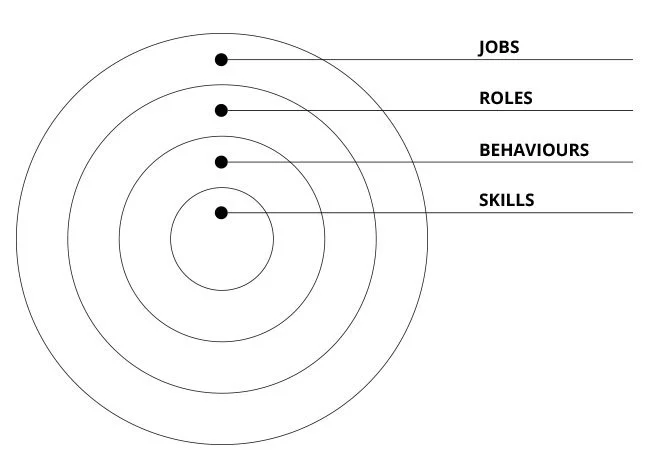Are you afraid of heights?
Gregory Ronczewski is the Director of Product Design at TeamFit - view his Skill Profile
It is November, and it means that the roof and the gutters on my house need to be cleaned before the winter. So, without much enthusiasm, I found myself on the ladder climbing up. It has to be done at least twice a year and every time I find myself carefully walking on the slanted surface, I am asking the same question: how many more years can I do this? At the same time, the view is beautiful--and frankly, sweeping the surface, being a manual labour, means that I often let my mind drift away. I recall my attempts to clean the gutters. One time, my father-in-law, who was visiting us at that time, was holding the ladder which was way too short. Another time, despite several warnings from my wife that the roof may be icy, I continued on with my plan. Here is a tip for you. If you find yourself on the icy roof afraid to make a step, sit down and take off your shoes. Walk in your socks. The warmth of your feet will melt the thin layer of frost, and you should be able to climb down to safety. I've tested this and it works.
Anyhow, the memories. How do they form? Daniel Schacter, in his book Searching for Memory, describes this process in detail. Recently, I found another fascinating description in The River of Consciousnessby Oliver Sacks. When we remember or try to bring a memory back to life, we do not visit our "library of memories" where we have filed the one we are looking for. The act of re-creating an event, a thought or a feeling, is much more like re-construction. Each time we remember something, it is through the building up of a new memory, over and over again. Each time a bit differently. Each is altered by other memories, influences, relations and so on. We are constantly involved in this re-constructing process pulling various data not from the same "drawer" but from any place that at the moment seems related. It explains why, for instance, a smell or a taste can transport you back in an instant. It is all about the relations, somethings explicitly encoded into our experience, and sometimes recorded without our conscious knowledge.
We are at the final stages of the design of a new module for Ibbaka Talent. We don't have yet a proper name for it, but in general, it is a Competency Model that will be added to the existing ecosystem. The design process that we took produced a simple schematic outlining the building blocks organized in a few layers. Similarly, as I described above how the memorizing process works, a discipline, a job or a role in the system is based on a set of unique relations between various elements connecting them into a complex structure looking at skills, behaviours, roles and learning resource.
The idea is that a competency model is not static.
It changes as the new competencies emerge while the other diminish in their importance. Now, this is just one side of the experience. Imagine the Competency Model forming a roof above the space taken by the people. It can be a team, a company or an individual. Their skill maps evolve even at a higher pace with the new competencies being self-assessed and confirmed by the team. The record reaches up to compare itself against the requirements and aspirations of the model producing an imprint of skill gaps, learning opportunities, future roles and jobs in a constantly evolving ecosystem. To visualize, the individual skill maps are the pillars holding the roof which is the competency model. If the posts connect well with the roof, the structure, or the company, is solid - well build.
The other aspect is a competency model has various related components
A job can contain a set of roles, behaviours and skills. A role includes behaviours and skills, and lastly, a behaviour can have skills. Those are the building blocks and the relationships between all of them, how they are connected together and in what arrangement makes the model quite interesting and unique. For example, a Project Manager for company A will look very different from the same role for a company B. Both will share several skills and behaviours that are expected, but the overall record will be entirely different. Similarly, a personal skill map capturing a role or set of roles within a job will display the unique capabilities captured by the combination of data that our AI analyze.
I put away the ladder with a sigh of relief. It's done for now. Next climb will be sometime in April or May. I did not have to take off my shoes and use the warm-sock trick. I managed though to re-build many of my high-elevation-experience memories including the one when I considered a very well paid job of painting cranes at one of the shipyards. Luckily, I declined the temptation of the big pile of cash. I was left with a bunch of knots making skills, safety processes and the reassuring smile of a friend of mine who was hoisting me off an old bridge on which we trained together. Who knows if and how this experience contributed to my skill map as I am sure they did. Every skill matters, every relation and connection makes you who you are in your professional capabilities.



